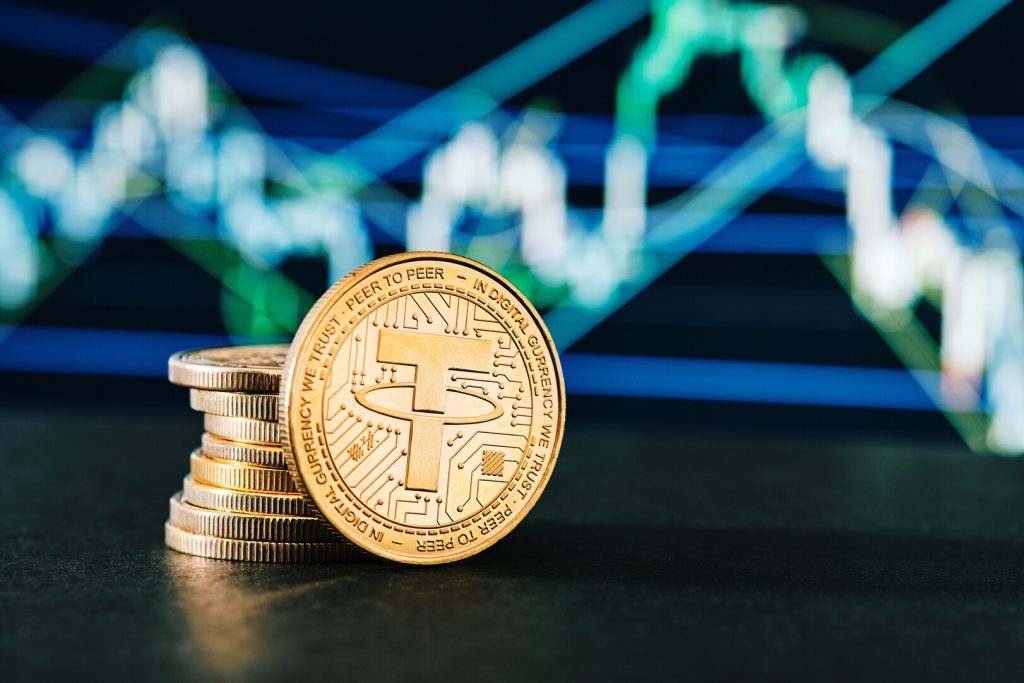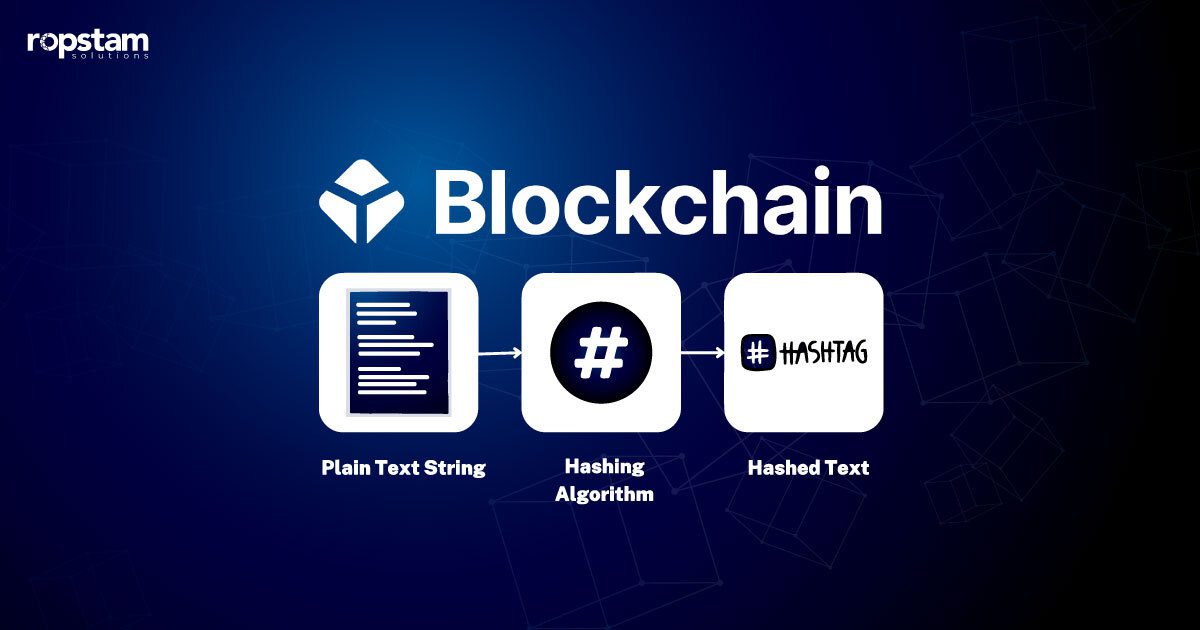We are living in the era of the emergence of decentralized currencies. In the decentralized world, secure connections of blocks containing data are the central elements of Web 3.0, the crypto world, NFTs, and other types of digital assets.
One of the biggest issues one faces while dealing with cryptocurrencies is their volatility and instability. Because of their inherent unpredictable nature, trading cryptocurrencies is a risky business. This resulted in the need to create a stablecoin, which is significantly less volatile in nature.
What is a Stablecoin?
Stablecoin is a type of cryptocurrency created to fulfill the criteria of keeping a stable value. By maintaining a stable value relative to a specific asset, such as a national currency or gold, Stablecoin mitigates the risk of instability in the decentralized world.
Just as the name itself suggests, Stablecoin has been designed to significantly reduce the unpredictability linked with other cryptocurrencies and flat currencies. Since stablecoin provides relative stability in real-world stock exchange scenarios, it has quickly become a useful source of exchanging cryptocurrencies.
In simpler words, Stablecoins provide a stable value source that can be leveraged for financial transactions without the potential risk of price volatility that other traditional cryptocurrencies possess. Some of the benefits of Stablecoins are relatively lower transaction fees, global accessibility, and the unique capability to counter inflation in a particular region,
Even though stablecoins are relatively new in the market as compared to other cryptocurrencies, the approach behind the creation of a stablecoin is an indication of a major milestone in the evolution of cryptocurrencies.
Types of Stablecoin
As mentioned earlier, Stablecoins are cryptocurrencies designed to have a stable value attached to an underlying asset. This contrasts with the high volatility seen in conventional cryptocurrencies like Bitcoin. There are several categories of stablecoins with different mechanisms for maintaining their pegged value:

1) Fiat-Collateralized Stablecoins
Fiat-collateralized stablecoins are backed by and pegged to fiat currencies like the US dollar. They function by holding reserve currency deposits equal to the number of coins in circulation. Popular examples include Tether (USDT), USD Coin (USDC), and TrueUSD.
These maintain their 1:1 dollar peg by auditing reserve balances and managing the supply accordingly. However, the lack of transparency around reserves has raised questions on whether all fiat-backed coins are fully collateralized.
2) Crypto-Collateralized Stablecoins
Crypto-collateralized stablecoins are backed by reserves of other cryptocurrencies instead of fiat currency. MakerDAO’s DAI is a leading example – units of Ether are locked as collateral in smart contracts to provide backing for minting DAI tokens.
These coins attempt to maintain stable valuations through mechanisms like over-collateralization and automatic issuance or burning of tokens to balance supply and demand. A risk is volatility in the collateral token eroding reserves.
3) Commodity-Collateralized Stablecoins
Stablecoins can also be pegged to the value of commodities like precious metals. Reserves are held in the underlying asset. For example, DigixDAO’s DGX token represents 1 gram of physical gold stored in vaults. The inherent stability of commodity prices enables these stablecoins to hold steady valuations. However, it depends on transparency and audits of the collateral.
4) Algorithmic Stablecoins
Algorithmic stablecoins use built-in protocols and supply-adjusting mechanisms instead of external collateral to maintain stability. Basis and Carbon were algorithmic stablecoins attempting to use bonded curves and seigniorage shares to control supply based on demand. However, designing robust algorithms unaffected by speculation has proven challenging – both projects shut down.
5) Seigniorage Shares
An innovation in algorithmic stablecoins is seigniorage shares. Holders of the stablecoin can claim shares when the coin loses its peg and benefits from seigniorage, providing incentives to restore the peg. This, along with algorithmic contractions/expansions of supply, aims to stabilize value. This approach, however, is still unproven in volatile markets.
6) Elastic Stablecoins
Elastic stablecoins like Elastic Set Dollar increase and decrease total supply algorithmically while maintaining individual token value. This elasticity allows more tokens to be minted if demand rises. This way, overall stability is ensured.
Benefits of Stablecoin
There are several benefits of this stable coin-crypto, which makes the field of creating stablecoin an attractive option in 2024. Some of these advantages have been highlighted in the following passage:
1) Price Stability
The core defining feature of stablecoins is providing stability in value, typically through pegging to reserve assets like fiat currencies or commodities. This allows stablecoins to function as predictable mediums of exchange and stores of value without the high volatility and fluctuations seen in conventional cryptocurrencies like Bitcoin and Ethereum.
Price stability lowers uncertainties and risks for payments, savings, lending, contracts, and other financial transactions – enabling reliable valuation. Stablecoins can empower more risk-averse businesses and consumers to access the benefits of blockchain technology by insulating them from the radical price swings common in the cryptocurrency world.
2) Mainstream Adoption
By mirroring the stable values of familiar assets like the US dollar, stablecoins can act as a gateway for mainstream consumer and institutional adoption of blockchain technology, even for those uncomfortable with cryptocurrency volatility.
Their steady valuations allow individuals and organizations to harness the advantages of blockchain around security, transparency, programmability, and efficiency – without exposure to the risks and uncertainties of highly variable crypto prices. Stablecoins represent a low-risk pathway for conventional financial entities and systems to interface with blockchain and cryptocurrencies by maintaining a stable value baseline.
3) Speed and Efficiency
Like other cryptocurrencies, transferring transactions in stablecoins can settle much faster, cheaper, and more seamlessly than traditional payment rails and asset transfers. Without requiring centralized intermediaries or slow confirmation steps, stablecoin transactions process rapidly.
This enables greatly enhanced speed and efficiency for payments, asset transfers, and other financial applications. Combined with price stability, fast settlement unlocks innovative opportunities across global commerce, decentralized finance, micropayments, and more.
4) Enhanced Liquidity
The ability to seamlessly convert between the stablecoin and its underlying reserve asset increases potential trading volumes and financial activities. For digital asset exchanges, increased liquidity allows users to move in and out of positions efficiently. For lenders and borrowers, liquidity aids capital flows and financing activities.
Overall, the liquidity effects generated through stabilizing liquid fiat currencies or commodities benefit market dynamics and the viability of blockchain-based financial systems.
5) Decentralized Finance (DeFi)
By providing a volatility-resistant unit of account and means of exchange, stablecoins are a critical building block for the emerging world of decentralized finance (DeFi). DeFi systems with purposes like decentralized lending, derivatives trading, insurance provision, and other complex financial instruments require stability to function effectively.
Unpredictable swings in unpegged cryptocurrencies introduce chaos. Stablecoins allow smart contracts and decentralized protocols to rely on a steady-value asset as an input, pricing baseline, means of settlement, and form of collateral. This unlocks growth and mainstream relevance for DeFi by bridging the benefits of blockchain with familiar stability.
6) Smart Contracts
Integration with programmable smart contracts greatly expands the utility of stablecoins for automating financial transactions and activities. Smart contracts underpinning decentralized applications can reliably leverage price-stable assets such as trusted inputs, settlement currencies, and collateral for automated contract executions.
Removing exposure to volatile crypto fluctuations allows smart contracts to function as intended. Stablecoins bring determinism into the outcomes, supporting more impactful applications across decentralized finance, supply chain tracking, insurance policies, digital content access, and any construct relying on programmed predictability.
7) Micropayments
The efficiency of transacting with stablecoins supports effective micropayments at much lower denominations than feasible with traditional payment methods. This allows fine-tuned monetization models such as pay-per-second billing for digital content consumption, fractional token ownership, and rewards, metered billing by usage or demand, and other constructs requiring granular cash flows.
Implementation frictions disappear when transfers occur in stablecoins, combining inexpensive transactions, prompt settlement, and steady valuations. Unpredictable volatility makes micropayments untenable with conventional cryptocurrency. Stablecoins bridge the gap, opening up innovation for everything from computational services to digital media.
8) Remittances
For remittances across borders, transferring funds in stablecoins offers a compelling alternative to conventional wire transfers or remittance services by leveraging the benefits of blockchain technology. Avoiding volatility removes uncertainties. The ability to send and receive remittances without delays or complex intermediaries via fast-settling blockchain rails, with minimal transaction fees, and at stable valuations creates significant advantages for migrant workers and global citizenry over legacy money transfer mechanisms.
9) Alternative Banking
By interfacing blockchain efficiencies with price stability, stablecoins present fresh opportunities for decentralized financial services. Stable cryptocurrencies enable attractive interest yields for savings accounts and certificates of deposit protected from inflationary fluctuations. Crypto banking solutions and debit cards provide easy spending.
Lending platforms allow low-risk P2P credit thanks to stable collateral. And seamless stablecoin onramps open alternative banking inclusion to the unbanked. Overall, stablecoins support reduced reliance on traditional banking institutions by securely extending aspects of financial infrastructure to the underserved – all underpinned by blockchain accessibility.
10) Regulatory Compliance
For regulated organizations and institutions, conducting transactions and accounting in cryptocurrencies introduces compliance challenges. The inherent volatility and crypto custodial asset requirements create balance sheet issues.
However, stablecoins pegged to currencies can simplify compliance compared to direct crypto exposure. Stablecoins mirroring fiat provide familiar regulatory treatment, especially for meeting reserve requirements. This makes stablecoins an easier bridge for compliant blockchain integration.
Features of Stablecoins
In order to decide whether or not to invest in stablecoin, you must be aware of the main features of stablecoins. There are several features that entice cryptocurrency enthusiasts toward large-scale stablecoin development. Some of them have been mentioned below:
1) Transparency
Many stablecoins are built on blockchain technology, providing transparent and auditable transactions on a public ledger.
2) Global Accessibility
Stablecoins enable cross-border transactions with reduced fees and faster settlement times compared to traditional methods.
3) Decentralization
Decentralization is the fundamental principle of stable crypto coins. Some stablecoins are issued on decentralized platforms, eliminating the need for intermediaries like banks.
4) Security
Stablecoin transactions are secured by blockchain cryptography, making them resistant to fraud and counterfeiting.
5) Instant Settlement
No one wants to wait a long enough time for the financial transactions to be completed. Transactions using stablecoins can be settled quickly, facilitating faster peer-to-peer and international transactions.
6) Privacy
Depending on the stablecoin, users may have varying levels of privacy and anonymity in their transactions. This way, sensitive user data and financial transactions are protected from threat actors.
7) Diversification
Stablecoins provide a hedge against the volatility of other cryptocurrencies by offering a more stable asset within the crypto ecosystem.
8) Smart Contract Integration
Many stablecoins are compatible with smart contracts, enabling programmable financial applications and automation.
9) Interoperability
A number of stablecoins are designed to work across multiple blockchains, enhancing their flexibility and usability in various ecosystems.
How to create a Stablecoin?
Given the wide array of features of this stable crypto coin, creating a stablecoin is an attractive and lucrative option. Following are the steps that you should undertake for the development of decentralized stablecoin:
- Decide on the Stability Model
- Choose which asset to link with
- Implement the Stability Protocol
- Establish Reserve Accounts
- Complete Auditing and Validation
- Release and Distribute Tokens
- List Cryptocurrency Exchanges
- Grow Integrations and Utilities
- Monitor and Maintain Stability
- Establish Transparency Practices
1) Decide on the stability model
The first step is deciding on the stability model that will be used to maintain the pegged value. The main options are fiat/crypto collateralization, commodity collateralization, or algorithmic protocols. The model will determine how the supply is managed through minting and burning to stabilize prices. Proper reserves or supply elasticity must counteract volatility.
2) Choose which asset to link with
An essential decision is which asset the stablecoin will be pegged to in order to derive its stable value. Typically, this involves widely traded fiat currencies like the US dollar or euro to tap into their inherent price stability.
Other options include exchange-traded commodities like gold or silver, which also exhibit limited volatility. Some newer coins have tried integrating with consumer price indices as well. Matching a stable mainstream asset is key to the stablecoin creation process.
3) Implement the Stability Protocol
Once the stability model and asset linking are decided, the smart contract protocols that will regulate token supply based on the chosen model must be programmed. The code implementation will encode the logical rules that control the minting and burning of tokens in response to market fluctuations to maintain the pegged value. For collateralized coins, this includes managing reserves.
4) Establish Reserve Accounts
For stablecoins backed by fiat or crypto collateral, adequate reserve accounts must be set up to hold the assets matching the number of coins in circulation. Reserves should be 1:1, auditable, sufficiently liquid, and managed by a custodian with controls around withdrawals. Reserves backstop the redemption value and allow maintaining the peg.
5) Complete Auditing and Validation
External audits by reputable firms should verify reserves for collateralized stablecoins or validate effective stability protocols for algorithmic coins before public launch. Ongoing audits further build trust. Proper governance frameworks for adjusting mechanisms and parameters should be tested.
6) Release and Distribute Tokens
Once stability mechanisms are proven, initial stablecoin tokens can be generated and launched. A transparent distribution strategy is needed, potentially involving airdrops, mining, and sales. Exchanges and wallets need integration to provide access points for users to obtain, store, and transact the tokens. Sufficient liquidity is necessary at launch to bootstrap active trading.
7) List Cryptocurrency Exchanges
To build adoption and usage, listing the stablecoin on major cryptocurrency exchanges is key. Being traded against BTC, ETH, and stable fiat pairs provides liquidity and exposure. Active trading enables users to seamlessly buy, sell, and convert stablecoins as needed.
8) Grow Integrations and Utilities
Beyond exchanges, pursuing the integration of stablecoin into payment systems, decentralized finance protocols, commercial platforms/retailers, cross-border solutions, and other use cases grows viable circulation. Utilizing incentive programs and business development can foster organic adoption of stablecoin’s stability attributes.
9) Monitor and Maintain Stability
Ongoing governance and diligent reserve management/algorithm improvements are required to protect the stable cryptocurrency as market conditions evolve. Mechanisms to expand and contract supply must remain responsive to demand changes and prevent death spirals.
10) Establish Transparency Practices
Regular public attestations on reserve holdings, smart contract operations, etc., establish transparency and trust in stablecoin. Adopt plans like independent audits, community insight, and parameters for adjusting mechanisms to provide confidence in stability and sustainability.
Examples of Stablecoins and their Approaches
Now that you have a detailed comprehension of stablecoin, and the methods of its creation, let’s have a look at some of the well-known examples of stablecoins:
1) Tether (USDT)
- One of the first and most widely used stablecoins. Pegged 1:1 to the US dollar.
- Uses fiat reserves held in bank accounts to maintain the peg.
- Controversy around whether reserves are sufficient due to lack of transparency.
2) USD Coin (USDC)
- Pegged to the US dollar and fully backed by dollar reserves.
- Reserves are frequently attested by independent audits.
- Developed by Circle and Coinbase as a regulated stablecoin.
3) Dai
- Decentralized stablecoin built on Ethereum. Soft-pegged to $1.
- Uses crypto-collateral and algorithmic supply adjustments to maintain value.
- One of the top stablecoins used in DeFi protocols.
4) Paxos Gold (PAXG)
- Pegged to gold prices and backed by physical gold reserves held in custody.
- Tokenizes gold to provide stability and facilitate transactions.
- Regulated as an SEC-registered security for compliance.
5) TerraUSD (UST)
- Algorithmic stablecoin that aims to be a scalable base layer for DeFi.
- Uses seigniorage shares and bonded collateral to stabilize value.
- Part of the Terra ecosystem and one of the larger DeFi stablecoins.
Conclusion
Stablecoin is a popular cryptocurrency coin whose main feature is to counter the volatility and instability offered by conventional cryptocurrencies. This blog illustrated the benefits, features, and approach for creating stablecoins to guide the readers.
You can access top-notch blockchain development services by partnering with Ropstam Solutions, a renowned technology firm. Our expert team specializes in creating innovative blockchain solutions tailored to your specific needs, ensuring transparency and security in your digital endeavors. Contact us today to explore the limitless possibilities of blockchain technology for your business.













